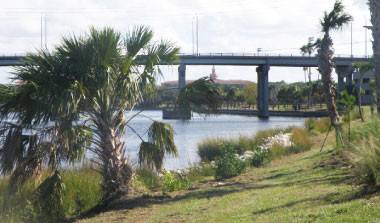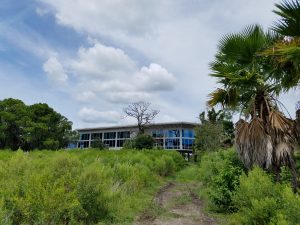
Photos courtesy St. Petersburg College and the city of Safety Harbor
Living shorelines are critical to the Tampa Bay Estuary Program’s (TBEP) ambitious habitat master plan. In the face of sea level rise and development, coastal properties become more and more valuable – for both economic and environmental reasons. The master plan focuses on taking advantage of all potential sites for restoration as those coastal properties become more and more valuable and vulnerable.
By Tom Ries, originally published July 27, 2022
The focus on living shorelines plays up a significant opportunity for coastal restoration involving both public and private ownership. A report from the Florida Fish and Wildlife Conservation Commission found that up to 500 miles of shoreline bordering Tampa Bay could be transformed or protected as living shores. The remaining 464 miles are highly modified shorelines, including finger canals built prior to the 1970s that are typically narrow and must accommodate boat traffic. Many of those seawalls are reaching the end of their anticipated life and must be replaced.
Currently, there are about 11 miles of living shorelines currently constructed in and around Tampa Bay. The TBEP Habitat Master Plan calls for the construction of one new mile every year through 2030 and then increases the target to 1.5 or 2 miles per year until 2050 for a total of 45 miles over the next 30 years. The master plan also calls for enhancing seawalls that cannot be replaced with oyster reef modules or rip-rap – rocky materials with rough edges – providing habitat for plants that support fish and crabs.
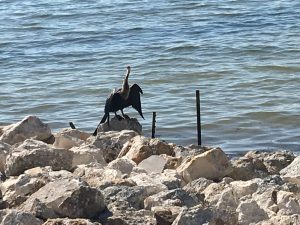
Achieving this goal will require that most of the living shorelines envisioned are constructed on private land and funded with private dollars. It’s doable. Across the region, people who own waterfront property have embraced the concept of a green alternative to the gray seawalls that discourage marine life. They understand that living shorelines can protect their property just as effectively, sometimes even better, than a seawall while providing ecological benefits including improved water quality and habitat for wildlife, such as fish and birds, as well as improving the aesthetics of their property.
The habitat value, and the opportunities for watching wildlife, have already led to several high-profile living shorelines, including installations at the Ulele restaurant along Tampa’s riverwalk, Tampa Bay Watch Discovery Center at St. Pete Pier, in Safety Harbor, and at St. Pete College’s Bay Pines Campus.
Implementing any work within the water (below the mean high water line) requires regulatory permission from the US Army Corps of Engineers (USACE) and state government agencies, including the Florida Department of Environmental Protection or the Southwest Florida Water Management District. If you are located within Hillsborough County, you must also secure authorization from Hillsborough County’s Environmental Protection Commission (EPC).

So until recently, it was easier to replace an existing seawall, as all three of these agencies allow the replacement of seawalls without complicated paperwork. However, if you wanted to remove your seawall and install a nature-based naturally sloped shoreline, you had to get permission from all three agencies, essentially creating a disincentive to implement a living shoreline or even a living seawall feature.
The good news is that it’s getting easier to build living shorelines than to simply replace old seawalls. In 2017 the USACE, which permits seawalls and other structures on most navigable waterfront sites, indicated their strong support by extending their Nationwide 54 permit exemption (2022) for living shoreline projects. This new nationwide exception expedites the permit federal approval process if an applicant meets their basic assumptions: no seagrass or natural resource impacts, placement within 30 feet of the shoreline, is less than 500 linear feet long, and consists of natural material (rock, oyster bags, plants, etc.)
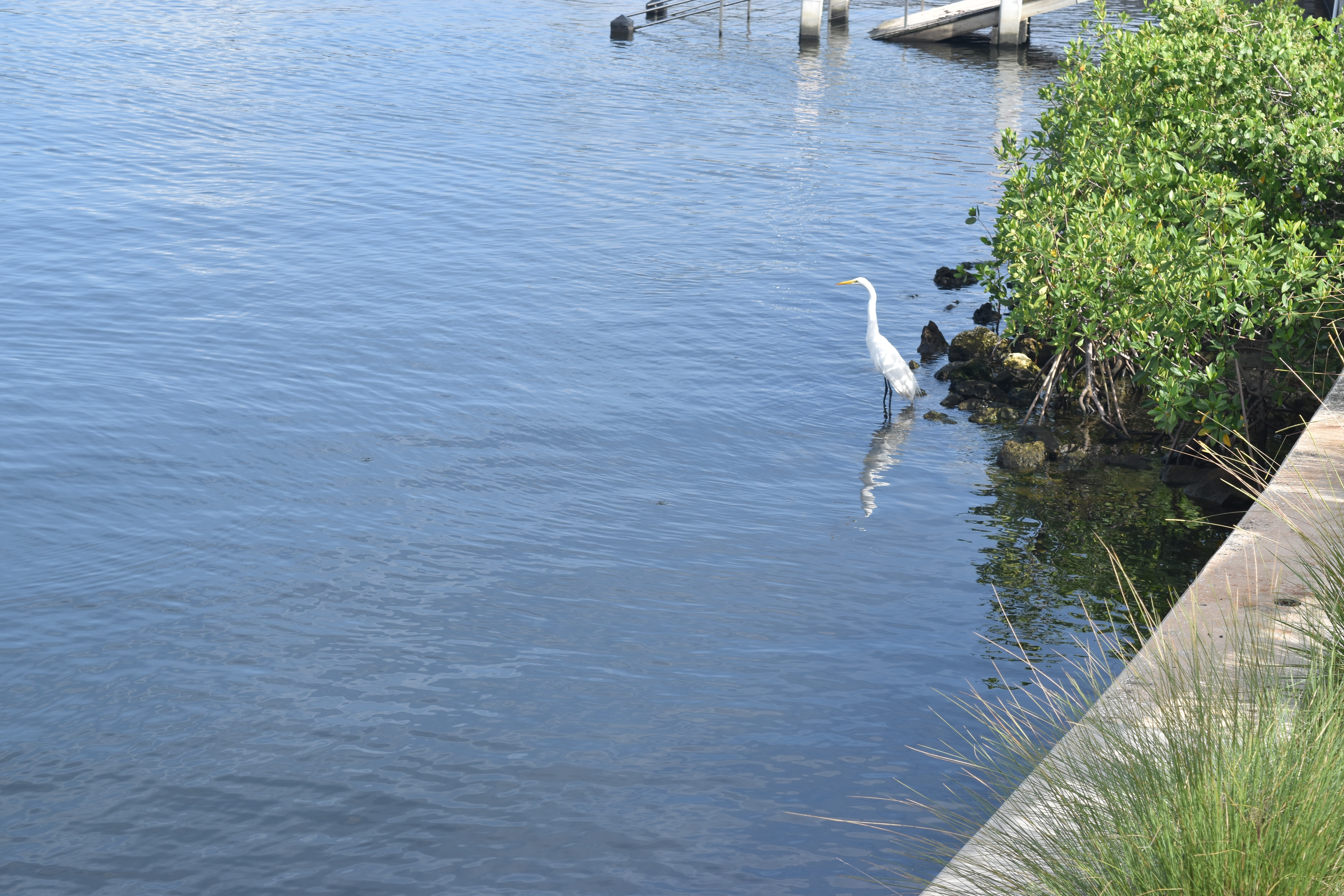
FDEP also has revised its regulations to mostly mimic the USACE’s permit exemption language and the EPC also recognized the value of living shorelines by revising their regulations to make it easier and cheaper for residents to build them on freshwater properties. But Port Tampa Bay owns submerged saltwater lands in Hillsborough County and they have not yet revised their enabling act to make living shorelines easier to implement.
Currently there are several living shoreline and seawall enhancement projects being implemented around Tampa Bay. These sites not only improve the ecological conditions of these locations, but they also provide sites for waterfront residents to see these alternatives first-hand. Examples include:
- FWC’s Suncoast Youth Conservation Center (Apollo Beach) where five design alternatives are on display
- Philippe Park living shoreline at the southern edge of the park
- Philippe Park seawall enhancement options with five design alternatives planned
- Ozone Roadside Park at the intersection of Bayshore Drive and Bay Street in Ozona has multiple living shoreline elements installed in front of the roadway retaining wall
- Treasure Bay Golf & Tennis Center is removing 30% of its seawall and replacing it with a true living shoreline and enhancing the other ⅔ with a hybrid living seawall feature.
- The city of Gulfport is implementing a living shoreline in front of their marina
- Eckerd College is implementing a complete resiliency plan which includes living shorelines where seawalls once stood and seawall enhancements activities in front of higher energy seawall locations
- Maximo Park is in the permitting stage to implement two living shorelines along their northern and southern shorelines
- St. Pete College STEM Center in Madeira Beach is also posed to implement their seawall removal and living shoreline installation later this year
- The City of Tampa just installed a living shoreline along the Hillsborough River at Ignacio Haya Linear Park
These projects add up to approximately 11,000 linear feet or 2.1 miles and 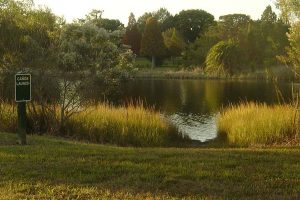 were implemented on public property, which are great locations for waterfront residents to visit to see what these alternative shoreline protection options look like. However, even if every single public waterfront was transformed into a nature-based shoreline treatment that only affects approximately 20% of the waterfront lands along the bay. The real difference needs to come when private owners implement living shorelines where they can. For this to happen will require that regulatory agencies make the process as easy as possible. Public agencies also need to consider the potential for making grants available, as long as a narrow conservation easement is applied to the restored shoreline feature. One way or another, we need to encourage and make it easier to meet the TBEP’s goal to achieve one mile per year of new living shorelines to Tampa Bay.
were implemented on public property, which are great locations for waterfront residents to visit to see what these alternative shoreline protection options look like. However, even if every single public waterfront was transformed into a nature-based shoreline treatment that only affects approximately 20% of the waterfront lands along the bay. The real difference needs to come when private owners implement living shorelines where they can. For this to happen will require that regulatory agencies make the process as easy as possible. Public agencies also need to consider the potential for making grants available, as long as a narrow conservation easement is applied to the restored shoreline feature. One way or another, we need to encourage and make it easier to meet the TBEP’s goal to achieve one mile per year of new living shorelines to Tampa Bay.
Tom Ries is the southeast biological services and restoration director for ESA, an environmental consulting firm where he specializes in ecosystem restoration, including stormwater retrofit and habitat restoration technologies. Tom is also president and founder of Ecosphere Restoration Institute, a not-for-profit organization focusing on public-private partnerships which has fostered living shoreline projects on over three miles of eroded coastlines.
.
